| Seeker/シーカー |
|
 |
| Rooms/部屋 |
|
 |
| Poll/投票 |
Which one could be the best HERO?
1. Solid Snake-Metal Gear Solid10. Sem Fischer-Splinter CellTotal of answers: 10
|
 |
| Radio/ラジオ |
|
 |
| Katakana F.C. |
|
 |
| PS3 Games |
|
 |
| Calculator |
|
 |
| Tool Set/工具セット |
|
|
 |
| Tags/札 |
|
|
 |
| PC Info |
|
 |
| Statistics/統計量 |


All Together: 1 Vagrants: 1 Online In Club: 0 |
 |
|
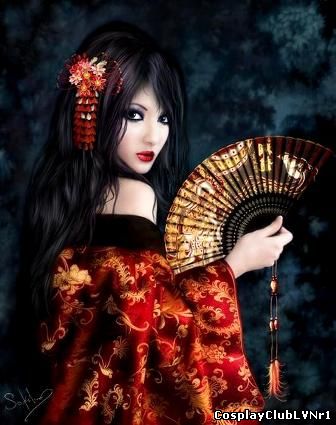 芸者 pronounced /ˈgeɪʃә/ in English, is a proper noun. Like all Japanese nouns, there are no distinct singular or plural variants of the term. The word consists of two kanji, (gei) meaning "art" and (sha) meaning "person" or "doer". The most direct translation of geisha into English would be "artist" or "performing artist"
Another term used in Japan is geiko, a word from the Kyoto dialect. Full-fledged geisha in Kyoto are called geiko. This term is also commonly used in the region to distinguish geisha practiced in traditional arts from prostitutes who have co-opted the name and attire of geisha (see below). Prostitutes wear the bow of their sash, or obi, in front of their kimono, but geisha wear their obi at the back. True geisha usually had the luxury of a professional aide to help them in the difficult process of dressing; their clothing is made up of several layers of kimono and undergarments, and an obi is more than a simple band of cloth. Dressing could take over an hour, even with professional help. Prostitutes, however, had to take off their obi several times a day, so theirs were far less complex, and tied at the front for ease of removal and replacement.
Apprentice geisha are called maiko. This word is made of the kanji (mai) meaning "dance" and (ko) meaning "child". It is the maiko, with her white make-up and elaborate kimono and hairstyle, that has become the stereotype of a "geisha" to westerners, rather than the true geisha. A woman entering the geisha community does not have to start out as a maiko, having the opportunity to begin her career as a full geisha. In fact, a woman above 21 is considered too old to be a maiko and becomes a full geisha upon her initiation into the geisha community. However, those who do go through the maiko stage enjoy more prestige later in their professional lives.
Tokyo geisha generally do not follow the ritualized Kyoto maiko apprentice process. The training period can be six months to a year - notably shorter than a Kyoto maiko - before she debuts as a full geisha. The trainee is referred to as a han'gyoku or "half-jewel", or by the more generic term o-shaku. "One who pours (alcohol)". On average, Tokyo geisha tend to be older than their Kyoto counterparts, many holding formal degrees from university.http://cache.halloweenmart.com/images/ip015628.jpghttp://www.youtube.com/watch?v=wYzqz3dMBCo&feature=related
Added by: Elans G. (MasterOfDark)
|
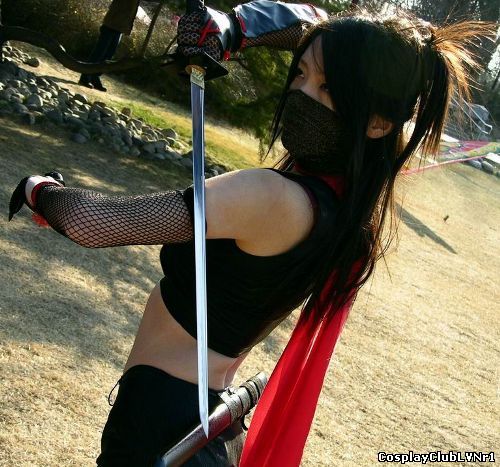 忍者In the Japanese history, a ninja was someone specially trained in a variety of unorthodox arts of war. The methods used by ninja included assassination, espionage, and a variety of martial arts.
Their exact origins are still unknown. Their roles may have included sabotage, espionage, scouting and assassination missions as a way to destabilize and cause social chaos in enemy territory or against an opposing ruler, perhaps in the service of their feudal rulers (daimyo, shogun), or an underground ninja organization waging guerilla warfare.
Etymology
Ninja is the on'yomi reading of the two kanji used to write shinobi-no-mono, which is the native Japanese word for people who practice ninjutsu sometimes erroneously transliterated as ninjitsu). The term shinobi has been traced as far back as the late 8th century when Heguri Uji no Iratsume wrote a poem to Ōtomo no Yakamochi. The underlying connotation of shinob means "to steal away" and—by extension—"to forbear," hence its association with stealth and invisibility. Mono (likewise pronounced sha or ja) means a "person."
The word ninja became popular in the post-World War II culture. The nin of ninjutsu is the same as that in ninja, whereas jutsu means skill or art, so ninjutsu means "the skill of going unperceived" or "the art of stealth"; hence, ninja and shinobi-no-mono (as well as shinobi) may be translated as "one skilled in the art of stealth and almost being unseen." Similarly, the pre-war word ninjutsu-zukai means "one who uses the art of remaining unperceived."
Other terms which may be used include oniwaban (one in the garden"), suppa, rappa, mitsumono, kusa (grass) and Iga-mono ("one from Iga").
In English language, the plural of ninja can be either unchanged as ninja, reflecting the Japanese language's lack of grammatical number, or the regular English plural ninjas.
Historical period of origin
The ninja use of stealth tactics against better-armed enemy samurai does not mean that they were limited to espionage and undercover work: that is simply where their actions most notably differed from the more accepted tactics of samurai. Their weapons and tactics were partially derived from the need to conceal or defend themselves quickly from samurai, which can be seen from the similarities between many of their weapons and various sickles and threshing tools used at the time.
Ninja as a group first began to be written about in 15th century feudal Japan as martial organizations predominately in the regions of Iga and Koga of central Japan, though the practice of guerrilla warfare and undercover espionage operations goes back much further.
At this time, the conflicts between the clans of daimyo that controlled small regions of land had established guerrilla warfare and assassination as a valuable alternative to frontal assault.Since Bushido, the Samurai Code, forbade such tactics as dishonorable, daimyo could not expect his own troops to perform the tasks required; thus, he had to buy or broker the assistance of ninja to perform selective strikes, espionage, assassination, and infiltration of enemy strongholds.
There are a few people and groups of people regarded as having been potential historical ninja from approximately the same time period. It is rumored that some of the higher-ranking daimyos and shoguns were in fact ninja, and exploited their role as ninja-hunters to deflect suspicion and obscure their participation in the 'dishonorable' ninja methods and training.
Though typically classified as assassins, many of the ninja were warriors in all senses. In Stephen K. Hayes's book, Mystic Arts of the Ninja, Master Troicuk (pronounced troycock), one of the most well-known ninja, is depicted in armor similar to that of a samurai. Hayes also says that those who ended up recording the history of the ninja were typically those within positions of power in the military dictatorships, and that students of history should realize that the history of the ninja was kept by observers writing about their activities as seen from the outside.
"Ninjutsu did not come into being as a specific well defined art in the first place, and many centuries passed before ninjutsu was established as an independent system of knowledge in its own right. Ninjutsu developed as a highly illegal counter culture to the ruling samurai elite, and for this reason alone, the origins of the art were shrouded by centuries of mystery, concealment, and deliberate confusion of history."
A similar account is given by Hayes: "The predecessors of Japan's ninja were so-called rebels favoring Buddhism who fled into the mountains near Kyoto as early as the 7th century A.D. to escape religious persecution and death at the hands of imperial forces."Historical organizationIn their history, ninja groups were small and structured around families and villages, later developing a more martial hierarchy that was able to mesh more closely with that of samurai and the daimyo. These certain ninjutsu trained groups were set in these villages for protection against raiders and robbers.
"Ninja museums" in Japan declare women to have been ninjas as well. A female ninja may be kunoichi; the characters are derived from the strokes that make up the kanji for female. They were sometimes depicted as spies who learned the secrets of an enemy by seduction; though it's just as likely they were employed as household servants, putting them in a position to overhear potentially valuable information.
As a martial organization, ninja would have had many rules, and keeping secret the ninja's clan and the daimyo who gave them their orders would have been one of the most important ones.
For modern hierarchy in ninjutsu, see Ninjutsu.
Historical garb, technique, and imageThere is no evidence that historical ninja limited themselves to all-black suits. In modern times, camouflage based upon dark colors such as dark red and dark blue is known to give better concealment at night. Some cloaks may have been reversible: dark colored on the outside for concealment during the night, and white colored on the inside for concealment in the snow. Some ninja may have worn the same armor or clothing as samurai or Japanese peasants.
The stereotypical ninja that continually wears easily identifiable black outfits (shinobi shozoku) comes from the Kabuki theater. Prop handlers would dress in black and move props around on the stage. The audience would obviously see the prop handlers, but would pretend they were invisible. Building on that willing suspension of disbelief, ninja characters also came to be portrayed in the theater as wearing similar all-black suits. This either implied to the audience that the ninja were also invisible, or simply made the audience unable to tell a ninja character from many prop handlers until the ninja character distinguished himself from the other stagehands with a scripted attack or assassination.
Ninja boots (jika-tabi), like much of the rest of Japanese footwear from the time, have a split-toe design that improves gripping and wall/rope climbing. They are soft enough to be virtually silent. Ninja also attached special spikes to the bottoms of the boots called ashiko.
The actual head covering suggested by Sōke Masaaki Hatsumi (in his book The Way of the Ninja: Secret Techniques) utilizes what is referred to as sanjaku-tenugui, (three-foot cloths). It involves the tying of two three-foot cloths around the head in such a way as to make the mask flexible in configuration but securely bound. Some wear a long robe, most of the time dark blue (kon'iro) for stealth.Associated equipmentThe assassination, espionage, and infiltration tasks of the ninja led to the development of specialized technology in concealable weapons and infiltration tools.Specialized weapons and tacticsNinja also employed a variety of weapons and tricks using gunpowder. Smoke bombs and firecrackers were widely used to aid an escape or create a diversion for an attack. They used timed fuses to delay explosions. Ōzutsu (cannons) they constructed could be used to launch fiery sparks as well as projectiles at a target. Small "bombs" called metsubushi ("eye closers") were filled with sand and sometimes metal dust. This sand would be carried in bamboo segments or in hollowed eggs and thrown at someone, the shell would crack, and the assailant would be blinded. Even land mines were constructed that used a mechanical fuse or a lit, oil-soaked string. Secrets of making desirable mixes of gunpowder were strictly guarded in many ninja clans.
Other forms of trickery were said to be used for escaping and combat. Ashiaro are wooden pads attached to the ninja's tabi (thick socks with a separate "toe" for bigger toe; used with sandals). The ashiaro would be carved to look like an animal's paw, or a child's foot, allowing the ninja to leave tracks that most likely would not be noticed.
Also a small ring worn on a ninja's finger called a shobo would be used for hand-to-hand combat. The shobo (or as known in many styles of ninjutsu, the shabo) would have a small notch of wood used to hit assailant's pressure points for sharp pain, sometimes causing temporary paralysis. A suntetsu is very similar to a shobo. It could be a small oval shaped piece of wood affixed to the finger by a small strap. The suntetsu would be held against a finger (mostly middle) on the palm-side and when the hand was thrust at an opponent using the longer piece of wood to target pressure points such as the solar plexus.
Ninja also used special short swords called ninjato, or shinobigatana. Ninjato are smaller than katana but larger than wakizashi. The ninjato was often more of a utilitarian tool than a weapon, not having the complex heat treatment of a usual weapon. Another version of the ninja sword was the shikoro ken (saw sword). The shikoro ken was said to be used to gain entry into buildings, and could also have a double use by cutting (or slashing in this case) opponents. The shuriken is a weapon that was essentially created from popular culture. It was almost never used by actual ninjas.
Many Ninja disgused themselves as farmers so that their weapons (the Kama) could be used as weapons and farming implements, their shurikens were also coated with poison so that when in direct combat with another the Ninja could throw the shuriken and the injury would seem minor but if left untreated (depending on the strength of the poison) it could be fatal.http://i154.photobucket.com/albums/s258/darkninjaspecter/ninjas/Ninja-1.jpghttp://www.youtube.com/watch?v=jtxV35FWHE4&NR=1
Added by: Elans G. (MasterOfDark)
|
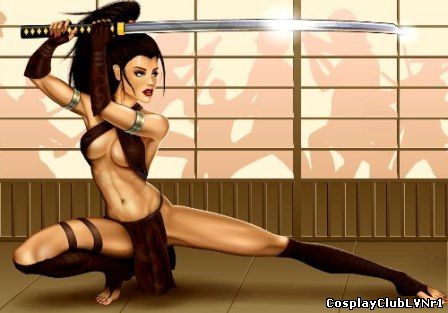 It is believed warriors and foot-soldiers in the sixth century may have formed a proto- 侍 class. Following a disastrous military engagement with Tang China and Silla, Japan underwent widespread reforms. One of the most important was that of the Taika Reform, issued by Prince Naka no Ōe (Emperor Tenji) in 646 AD. This edict introduced Chinese cultural practices and administrative techniques throughout the Japanese aristocracy and bureaucracy. As part of the Taihō Code, of 702 AD and the later Yōrō Code, the population was required to report regularly for census, which was used as a precursor for national conscription. With an understanding of how the population was distributed, Emperor Mommu introduced the law whereby 1 in 3–4 adult males were drafted into the national military. These soldiers were required to supply their own weapons, and in return were exempted from duties and taxes.This was one of the first attempts by the Imperial government to form an organized army modelled after the Chinese system. It was called gundan-sei by later historians and is believed to have been short lived.
The Taihō Code classified Imperial bureaucrats into 12 ranks, each divided into two sub-ranks, 1st rank being the highest adviser to the emperor. Those of 6th rank and below were referred to as "samurai" and dealt with day-to-day affairs. Although these "samurai" were civilian public servants, the name is believed to have derived from this term. Military men, however, would not be referred to as "samurai" for many more centuries.
In the early Heian period, the late 8th and early 9th centuries, Emperor Kammu sought to consolidate and expand his rule in northern Honshū, but the armies he sent to conquer the rebellious Emishi people lacked motivation and discipline, and were unable to prevail. Emperor Kammu introduced the title of Seiitaishogun or shogun, and began to rely on the powerful regional clans to conquer the Emishi. Skilled in mounted combat and archery these clan warriors became the emperor's preferred tool for putting down rebellions. Although these warriors may have been educated, at this time (7th to 9th century) the Imperial court officials considered them to be little more than barbarians.
Ultimately, Emperor Kammu disbanded his army, and from this time, the emperor's power gradually declined . While the emperor was still the ruler, powerful clans around Kyoto assumed positions as ministers, and their relatives bought positions as magistrates. To amass wealth and repay their debts, magistrates often imposed heavy taxes, resulting in many farmers becoming landless.
As the threat of robbery rose, the clans began recruiting these exiles in the Kanto plains. Because of their intense training in the martial arts, they proved to be effective guards. Small numbers would accompany tax collectors and, merely by their presence, deter thieves and bandits from attacking. They were saburai, armed retainers, yet their advantage of being the sole armed party quickly became apparent.
Through protective agreements and political marriages, they accumulated political power, eventually surpassing the traditional aristocracy.
Some clans were originally formed by farmers who had taken up arms to protect themselves from the imperial magistrates sent to govern their lands and collect taxes. These clans formed alliances to protect themselves against more powerful clans, and by the mid-Heian period they had adopted characteristic Japanese armour and weapons, and laid the foundations of Bushido, their ethical code.
For most of samurai history, warriors described themselves as followers of Budo or Bushido and had a universal set of values dervived from Confucianisn, Buddhism and Shinto. Families such as the Imagawa had large numbers of followers and broad influence and so their ethical code spread across the realm and were widely quoted by others. Kato Kiyomasa commanded over Japan's forces in Korea and therefore had a large influence over the other warrior families.
By the 12th century, samurai were highly literate due to the general introduction of Confucianism from China during the 7th to 9th centuries, and aspired to the more cultured abilities of the nobility. This was achieved because education was required and some lords ordered the men to be educated. Examples such as Taira Tadanori (a samurai who appears in the Heike Monogatari or "Tale of the Heike") demonstrate that some warriors idealized the arts and aspire to become skilled in them; Tadanori is famous for his skill with the pen and the sword or the "bun and the bu", harmony of fighting and learning.
From the earliest Japanese writings such as the Kojiki, samurai were expected to be cultured and literate, and the ancient saying "Bun Bu Ryo Do" (lit. literary arts, military arts, both ways) or "The pen and the sword in accord," was an ideal to which many aspired. The number of men who actually achieved the ideal and lived their lives by it was high. By the time of the Meiji restoration, Japanese literacy rates were higher than European literacy rates.
An early term for warrior, "uruwashii", was written with a kanji that combined the characters for literary study and military arts and is mentioned in the Heike Monogatari (late 12th century). The Heike Monogatari makes reference to the educated poet-swordsman ideal in its mention of Taira no Tadanori's death:
"Friends and foes alike wet their sleeves with tears and said, 'What a pity! Tadanori was a great general, pre-eminent in the arts of both sword and poetry.' "
According to William Scott Wilson in his book Ideals of the Samurai: "The warriors in the Heike Monogatari served as models for the educated warriors of later generations, and the ideals depicted by them were not assumed to be beyond reach. Rather, these ideals were vigorously pursued in the upper echelons of warrior society and recommended as the proper form of the Japanese man of arms. With the Heike Monogatari, the image of the Japanese warrior in literature came to its full maturity." Wilson then translates the writings of several warriors who mention the Heike Monogatari as an example for their men to follow.
Plenty of warrior writings document this ideal from the 13th century onward.Kamakura Bakufu and the rise of SamuraiOriginally the emperor and nobility employed these warriors. In time, they amassed enough manpower, resources and political backing in the form of alliances with one another, to establish the first samurai-dominated government.
As the power of these regional clans grew, their chief was typically a distant relative of the emperor, and a lesser member of either the Fujiwara, Minamoto, or Taira clans.
Though originally sent to provincial areas for a fixed four-year term as a magistrate, the toryo declined to return to the capital when their terms ended, and their sons inherited their positions and continued to lead the clans in putting down rebellions throughout Japan during the middle and later Heian period.
Samurai fought at the naval battle of Dan-no-Ura in 1185. Because of their rising military and economic power, the warriors ultimately became a new force in the politics of the court. Their involvement in the Hōgen in the late Heian period consolidated their power, and finally pitted the rival Minamoto and Taira clans against each other in the Heiji Rebellion of 1160.
The winner, Taira no Kiyomori, became an imperial advisor, and was the first warrior to attain such a position. He eventually seized control of the central government, establishing the first samurai-dominated government and relegating the emperor to figurehead status.
However, the Taira clan was still very conservative when compared to its eventual successor, the Minamoto, and instead of expanding or strengthening its military might, the Taira clan had its women marry emperors and exercise control through the emperor.
The Taira and the Minamoto clashed again in 1180, beginning the Gempei War which ended in 1185. The victorious Minamoto no Yoritomo established the superiority of the samurai over the aristocracy. In 1190, he visited Kyoto and in 1192, became Seii Taishogun, establishing the Kamakura Shogunate, or Kamakura Bakufu. Instead of ruling from Kyoto, he set up the Shogunate in Kamakura, near his base of power. "Bakufu" means "tent government," taken from the encampments the soldiers would live in, in accordance with the Bakufu's status as a military government.
Over time, powerful samurai clans became warrior nobility, or "buke", who were only nominally under the court aristocracy. When the samurai began to adopt aristocratic pastimes like calligraphy, poetry and music, some court aristocrats in turn began to adopt samurai customs. In spite of various machinations and brief periods of rule by various emperors, real power was now in the hands of the Shogun and the samurai.Ashikaga Shogunate and the Feudal PeriodThe Samurai Suenaga facing Mongols, during the Mongol invasions of Japan. Moko Shurai Ekotoba circa 1293.
Various samurai clans struggled for power during the Kamakura and Ashikaga Shogunates.
Zen Buddhism spread among the samurai in the 13th century and helped to shape their standards of conduct, particularly overcoming fear of death and killing, but among the general populace, Pure Land Buddhism was favored.
In 1274, the Yuan Dynasty of the Mongol Empire sent a force of some 40,000 men and 900 ships to invade Japan in northern Kyūshū. Japan mustered a mere 10,000 samurai to meet this threat. The invading army was harassed by major thunderstorms throughout the invasion, which aided the defenders by inflicting heavy casualties. The Yuan army was eventually recalled and the invasion called off. The Mongol invaders used small bombs, which was likely the first appearance of bombs and gunpowder in Japan.
The Japanese defenders recognized the possibility of a renewed invasion, and began construction of a great, stone barrier around Hakata Bay in 1276. Completed in 1277, this wall stretched for 20 kilometers around the border of the bay. This would later serve as a strong defensive point against the Mongols. The Mongols attempted to settle matters in a diplomatic way from 1275 to 1279, but every envoy sent to Japan was executed. This set the stage for one of the most famous engagements in Japanese history.
In 1281, a Yuan army of 140,000 men with 4,400 ships was mustered for another invasion of Japan. Northern Kyūshū was defended by a Japanese army of 40,000 men. The Mongol army was still on its ships preparing for the landing operation when a typhoon hit north Kyūshū island. The casualties and damage inflicted by the typhoon, followed by the Japanese defense of the Hakata Bay barrier, resulted in the Mongols again recalling their armies.
Samurai and defensive wall at Hakata. Moko Shurai Ekotoba, 1293.
The thunderstorms of 1274 and the typhoon of 1281 helped the samurai defenders of Japan repel the Mongol invaders despite being vastly outnumbered. These winds became known as kami-no-kaze, which literally translates as "wind of the gods." This is often given a simplified translation as "divine wind." The kami-no-kaze lent credence to the Japanese belief that their lands were indeed divine and under supernatural protection.
In the 14th century, a blacksmith called Masamune developed a two-layer structure of soft and hard steel for use in swords. This structure gave much improved cutting power and endurance, and the production technique led to Japanese swords (katana) being recognized as some of the most potent hand weapons of pre-industrial East Asia. Many swords made using this technique were exported across the East China Sea, a few making their way as far as India.
Issues of inheritance caused family strife as primogeniture became common, in contrast to the division of succession designated by law before the 14th century. To avoid infighting, invasions of neighboring samurai territories became common and bickering among samurai was a constant problem for the Kamakura and Ashikaga Shogunates.
The Sengoku jidai ("warring-states period") was marked by the loosening of samurai culture with people born into other social strata sometimes making names for themselves as warriors and thus becoming de facto samurai. In this turbulent period, bushido ethics became important factors in controlling and maintaining public order.
Japanese war tactics and technologies improved rapidly in the 15th and 16th century. Use of large numbers of infantry called ashigaru ("light-foot," due to their light armour), formed of humble warriors or ordinary people with Nagayari (a long lance) or (Naginata), was introduced and combined with cavalry in maneuvers. The number of people mobilized in warfare ranged from thousands to hundreds of thousands.
Nanban (Western)-style samurai cuirass, 16th century.
The arquebus, a matchlock gun, was introduced by the Portuguese via a Chinese pirate ship in 1543 and the Japanese succeeded in assimilating it within a decade. Groups of mercenaries with mass-produced arquebuses began playing a critical role.
By the end of feudal period, several hundred thousand firearms existed in Japan and massive armies numbering over 100,000 clashed in battles. By comparison, the largest and most powerful army in Europe, the Spanish, had only several thousand firearms and could only assemble 30,000 troops.
In 1592, and again in 1598, Toyotomi Hideyoshi decided to invade China and sent to Korea an army of 160,000 samurai (Hideyoshi's invasions of Korea. Taking advantage of its mastery of the arquebus, Japanese samurai almost led the war to victory, but were unable to do so, due to the entry of Ming Chinese troops. A few of the more famous samurai generals of this war were Katō Kiyomasa, Konishi Yukinaga, and Shimazu Yoshihiro.
Social mobility was high, as the ancient regime collapsed and emerging samurai needed to maintain large military and administrative organizations in their areas of influence. Most of the samurai families that survived to the 19th century originated in this era, declaring themselves to be the blood of one of the four ancient noble clans, Minamoto, Taira, Fujiwara and Tachibana. In most cases, however, it is hard to prove these claims.
See also: Nanban trade periodOda, Toyotomi and TokugawaOda Nobunaga was the well-known lord of the Nagoya area (once called Owari Province) and an exceptional example of a samurai of the Sengoku Period. He came within a few years of, and laid down the path for his successors to follow, the reunification of Japan under a new Bakufu (Shogunate).
Oda Nobunaga made innovations in the fields of organization and war tactics, heavily used arquebuses, developed commerce and industry and treasured innovation. Consecutive victories enabled him to realize the termination of the Ashikaga Bakufu and the disarmament of the military powers of the Buddhist monks, which had inflamed futile struggles among the populace for centuries. Attacking from the "sanctuary" of Buddhist temples, they were constant headaches to any warlord and even the emperor who tried to control their actions. He died in 1582 when one of his generals, Akechi Mitsuhide, turned upon him with his army.
The Samurai Hasekura Tsunenaga in Rome in 1615, Coll. Borghese, Rome.
Importantly, Toyotomi Hideyoshi (see below) and Tokugawa Ieyasu, who founded the Tokugawa Shogunate, were loyal followers of Nobunaga. Hideyoshi was brought up from a nameless peasant to be one of Nobunaga's top generals and Ieyasu had shared his childhood with Nobunaga. Hideyoshi defeated Mitsuhide within a month and was regarded as the rightful successor of Nobunaga by avenging the treachery of Mitsuhide.
These two were gifted with Nobunaga's previous achievements on which build a unified Japan and there was a saying: "The reunification is a rice cake; Oda made it. Hashiba shaped it. At last, only Ieyasu tastes it." (Hashiba is the family name that Toyotomi Hideyoshi used while he was a follower of Nobunaga.)
Toyotomi Hideyoshi, who became a grand minister in 1586, himself the son of a poor peasant family, created a law that the samurai caste became codified as permanent and hereditary, and that non-samurai were forbidden to carry weapons, thereby ending the social mobility of Japan up until that point, which lasted until the dissolution of the Edo Shogunate by the Meiji revolutionaries.
It is important to note that the distinction between samurai and non-samurai was so obscure that during the 16th century, most male adults in any social class (even small farmers) belonged to at least one military organization of their own and served in wars before and during Hideyoshi's rule. It can be said that an "all against all" situation continued for a century.
The authorized samurai families after the 17th century were those that chose to follow Nobunaga, Hideyoshi and Ieyasu. Large battles occurred during the change between regimes, and a number of defeated samurai were destroyed, went ronin or were absorbed into the general populace.Tokugawa ShogunateSamurai walking followed by a servant, by Hanabusa Itcho (1652 - 1724)
During the Tokugawa era, samurai increasingly became courtiers, bureaucrats, and administrators rather than warriors. With no warfare since the early 17th century, samurai gradually lost their military function during the Tokugawa era (also called the Edo period).
By the end of the Tokugawa era, samurai were aristocratic bureaucrats for the daimyo, with their daisho, the paired long and short swords of the samurai (cf. katana and wakizashi) becoming more of a symbolic emblem of power rather than a weapon used in daily life.
They still had the legal right to cut down any commoner who did not show proper respect kiri sute gomen but to what extent this right was used is unknown. When the central government forced daimyos to cut the size of their armies, unemployed ronin became a social problem.
Theoretical obligations between a samurai and his lord (usually a daimyo) increased from the Genpei era to the Edo era. They were strongly emphasized by the teachings of Confucius and Mencius (ca 550 B.C.) which were required reading for the educated samurai class. Bushido was formalized by several influential leaders and families before the Edo Period. Bushido was an ideal, and it remained fairly uniform from the 13th century to the 19th century — the ideals of Bushido transcended social class, time and geographic location of the warrior class.
Bushido was formalized by samurai such as Imagawa Ryoshun as early as the 13th century. The conduct of samurai served as role model behavior for the other social classes. With time on their hands, samurai spent more time in pursuit of other interests such as becoming scholars.
Bushido still survives in present-day Japanese society, as do many other aspects of the samurai's way of life.
Modernization of the samurai (1854-1868)
Main article: Late Tokugawa shogunate
Shogunal samurai troops in 1864 (Illustrated London News).
Two-sworded samurai in Westernized clothing, during the Late Tokugawa shogunate, 1866.
By this time, the Way of Death and Desperateness had been eclipsed by a rude awakening in 1853, when Commodore Matthew Perry's massive steamships from the U.S. Navy first imposed broader commerce on the once-dominant national policy of isolationism. Prior to that only a few harbor towns, under strict control from the Shogunate, were able to participate in Western trade, and even then, it was based largely on the idea of playing the Franciscans and Dominicans off against one another (in exchange for the crucial arquebus technology, which in turn was a major contributor to the downfall of the classical samurai).
From 1854, the samurai army and the navy were modernized. A Naval training school was established in Nagasaki in 1855. Naval students were sent to study in Western naval schools for several years, starting a tradition of foreign-educated future leaders, such as Admiral Enomoto.
French naval engineers were hired to build naval arsenals, such as Yokosuka and Nagasaki. By the end of the Tokugawa shogunate in 1867, the Japanese navy of the shogun already possessed eight western-style steam warships around the flagship Kaiyō Maru, which were used against pro-imperial forces during the Boshin war, under the command of Admiral Enomoto. A French Military Mission to Japan (1867) was established to help modernize the armies of the Bakufu.
The last showing of the original samurai was in 1867 when samurai from Chōshū and Satsuma provinces defeated the Shogunate forces in favor of the rule of the emperor in the Boshin War (1868-1869). The two provinces were the lands of the daimyo that submitted to Ieyasu after the Battle of Sekigahara (1600).
Decline during the Meiji Restoration (1868-)
Samurai of the Satsuma clan, during the Boshin War period, circa 1867. Photograph by Felice Beato
Emperor Meiji abolished the samurai's right to be the only armed force in favor of a more modern, western-style, conscripted army in 1873. Samurai became Shizoku who retained some of their salaries, but the right to wear a katana in public was eventually abolished along with the right to execute commoners who paid them disrespect.
The samurai finally came to an end after hundreds of years of enjoyment of their status, their powers, and their ability to shape the government of Japan. However, the rule of the state by the military class was not yet over.
In defining how a modern Japan should be, members of the Meiji government decided to follow the footsteps of United Kingdom and Germany, basing the country on the concept of "noblesse oblige." Samurai were not to be a political force under the new order.
With the Meiji reforms in the late 19th century, the samurai class was abolished, and a western-style national army was established. The Imperial Japanese Armies were conscripted, but many samurai volunteered to be soldiers and many advanced to be trained as officers. Much of the Imperial Army officer class was of samurai origin and they were highly motivated, disciplined and exceptionally trained.
Saigo Takamori (seated, in Western uniform), surrounded by his officers, in samurai attire, during the 1877 Satsuma rebellion. News article in Le Monde Illustré, 1877.
The last samurai conflict was arguably in 1877, during the Satsuma Rebellion in the Battle of Shiroyama. This conflict had its genesis in the previous uprising to defeat the Tokugawa Shogunate, leading to the Meiji Restoration.
The newly formed government instituted radical changes, aimed at reducing the power of the feudal domains, including Satsuma, and the dissolution of samurai status. This led to the ultimately premature uprising, led by Saigō Takamori.
Samurai were many of the early exchange students, not directly because they were samurai, but because many samurai were literate and well-educated scholars. Some of these exchange students started private schools for higher educations, while many samurai took pens instead of guns and became reporters and writers, setting up newspaper companies, and others entered governmental service.
Only the name Shizoku existed after that. After Japan lost the World War II, the name Shizoku disappeared under the law on January 1, 1948.
Western samuraiThe French Navy officer Eugène Collache fought for the Shogun as a samurai during the Boshin War(1869).
The English sailor and adventurer William Adams (1564–1620) seems to have been the first foreigner to receive the dignity of samurai. The Shogun Tokugawa Ieyasu presented him with two swords representing the authority of a samurai, and decreed that William Adams the sailor was dead and that Miura Anjin, a samurai, was born. Adams also received the title of hatamoto (bannerman), a high-prestige position as a direct retainer in the Shogun's court. He was provided with generous revenues: "For the services that I have done and do daily, being employed in the Emperor's service, the emperor has given me a living" (Letters). He was granted a fief in Hemi within the boundaries of present-day Yokosuka City, "with eighty or ninety husbandmen, that be my slaves or servants" (Letters). His estate was valued at 250 koku (measure of the income of the land in rice equal to about five bushels). He finally wrote "God hath provided for me after my great misery" (Letters) by which he meant the disaster-ridden voyage that had initially brought him to Japan.
Jan Joosten van Lodensteijn (1556?-1623?), a Dutch colleague of Adams' on their ill-fated voyage to Japan in the ship De Liefde, was also given similar privileges by Tokugawa Ieyasu. It appears Joosten became a samurai[citation needed] and was given a residence within Ieyasu's castle at Edo. Today, this area at the east exit of Tokyo Station is known as Yaesu . Yaesu is a corruption of the Dutchman's Japanese name, Yayousu. Also in common with Adam's, Joostens was given a Red Seal Ship allowing him to trade between Japan and Indo-China. On a return journey from Batavia Joosten drowned after his ship ran aground.
Also, during the Boshin War (1868-1869), French soldiers joined the forces of the Shogun against the Southern Daimyos favorable to the restoration of the Meiji emperor. It is recorded that the French Navy officer Eugène Collache fought in samurai attire with his Japanese brother-in-arms. At the same time, the Prussian Edward Schnell served the Aizu domain as a military instructor and procurer of weapons. He was granted the Japanese name Hiramatsu Buhei, which inverted the characters of the daimyo's name Matsudaira. Hiramatsu (Schnell) was given the right to wear swords, as well as a residence in the castle town of Wakamatsu, a Japanese wife, and retainers. In many contemporary references, he is portrayed as wearing a Japanese kimono, overcoat, and swords, with Western riding trousers and boots.CultureAs de facto aristocrats for centuries, samurai developed their own cultures that influenced Japanese culture as a whole.EducationA samurai was expected to read and write, as well as to know some mathematics. Toyotomi Hideyoshi, a great samurai yet originally a peasant, could only read and write in hiragana and this was a significant drawback for him. Samurai were expected, though not required, to have interests in other arts such as dancing, Go, literature, poetry, and tea. Ōta Dōkan who first ruled Edo wrote how he was shamed to realize that even a commoner had more knowledge of poetry than he.
ShudōA Shudō-type encounter between younger and older samurai. From "Tale of Shudō" 1661.
Shudō, the tradition of love bonds between a seasoned and a novice samurai was held to be "the flower of the samurai spirit" and formed the real basis of the samurai aesthetic. It was analogous to the educational Greek pederasty and an honored and important practice in samurai society. It was one of the main ways in which the ethos and the skills of the samurai tradition were passed down from one generation to another.[citation needed]
Another name for the bonds was bidō ( "the beautiful way"). The devotion that two samurai would have for each other would be almost as great as that which they had for their daimyo. Indeed, according to contemporary accounts, the choice between his lover and his master could become a philosophical problem for samurai. Hagakure and other samurai manuals gave specific instructions in the way that this tradition was to be carried out and respected. After the Meiji Restoration and the introduction of a more westernised lifestyle, the practice died out.
The bonds of shudo may not have been as widely practiced or as universally praised as some documents suggest. "Keichu Kibun Makurabunko" written in the Edo era by the pseudonymous Insaisen is clearly critical of shudo.NamesA samurai was usually named by combining one kanji from his father or grandfather and one new kanji. Samurai normally used only a small part of their total name.
For example, the full name of Oda Nobunaga would be "Oda Kazusanosuke Saburo Nobunaga", in which "Oda" is a clan or family name, "Kazusanosuke" is a title of vice-governor of Kazusa province, "Saburo" is a name before genpuku, a coming of age ceremony, and "Nobunaga" is an adult name. Samurai were able to choose their own last names.MarriageThe marriage of samurai was done by having a marriage arranged by someone with the same or higher rank than those being married. While for those samurai in the upper ranks this was a necessity (as most had few opportunities to meet a female), this was a formality for lower ranked samurai. Most samurai married women from a samurai family, but for a lower ranked samurai marriages with commoners were permitted. In these marriages a dowry was brought by the woman and was used to start their new lives.
A samurai could have a mistress but her background was strictly checked by higher ranked samurai. In many cases, this was treated like a marriage. "Kidnapping" a mistress, although common in fiction, would have been shameful, if not a crime. When she was a commoner, a messenger would be sent with betrothal money or a note for exemption of tax to ask for her parent's acceptance and many parents gladly accepted. If a samurai's wife gave birth to a son he could be a samurai.
A samurai could divorce his wife for a variety of reasons with approval from a superior, but divorce was, while not entirely nonexistent, a rare event. A reason for divorce would be if she could not produce a son, but then adoption could be arranged as an alternative to divorce. A samurai could divorce for personal reasons, even if he simply did not like his wife, but this was generally avoided as it would embarrass the samurai who had arranged the marriage. A woman could also arrange a divorce, although it would generally take the form of the samurai divorcing her. After a divorce samurai had to return the betrothal money, which often prevented divorces. Some rich merchants had their daughters marry samurai to erase a samurai's debt and advance their positions.
A samurai's wife would be dishonored and allowed to commit jigai (a female's seppuku) if she were cast off.PhilosophyThe philosophies of Buddhism and Zen, and to a lesser extent Confucianism and Shinto, influenced the samurai culture. Zen meditation became an important teaching due to it offering a process to calm one's mind. The Buddhist concept of reincarnation and rebirth led samurai to abandon torture and needless killing, while some samurai even gave up violence altogether and became Buddhist monks after realizing how fruitless their killings were. Some were killed as they came to terms with these realizations in the battlefield. The most defining role that Confucianism played in samurai philosophy was to stress the importance of the lord-retainer relationship; this is, the loyalty that a samurai was required to show his lord.
Bushidō ("way of the warrior") was a term attached to a samurai "code of conduct" or way of life enforced during Edo period by the Tokugawa Shogunate, so that they could control the samurai more easily. Its deceptive simplicity led to countless arguments over its interpretation. Hagakure: The Book of the Samurai by Yamamoto Tsunetomo is a manual of instruction into the way of the samurai. Even as it was published, it received a number of reviews that criticized its strict and impersonal interpretations. If the lord is wrong, for example if he ordered a massacre of civilians, should he observe loyalty to massacre as ordered or should he observe rectitude to let the civilians escape unharmed? If a man had sick parents but committed an unforgivable mistake, should he protect his honour by committing seppuku or should he show courage by living with dishonor and care for his parents?The incident of 47 Ronin caused debates about the righteousness of the samurai's actions and how bushido should be applied. They had defied the shogun by taking matters into their own hands but it was an act of loyalty and rectitude as well. Finally, their acts were agreed to be rectitude but not loyalty to the shogun. This made them criminals with conscience and eligible for seppuku.WomenMaintaining the household, or ie, was the main duty of samurai women. This was especially crucial during early feudal Japan, when warrior husbands were often traveling abroad or engaged in clan battles. The wife, or okusan (meaning: one who remains in the home), was left to manage all household affairs, care for the children, and perhaps even defend the home forcibly. For this reason, many women of the samurai class were trained in wielding a polearm called a naginata or a special knife called the kaiken in an art called tantōjutsu (lit. the skill of the knife), which they could use to protect their household, family, and honor if the need arose.Traits valued in women of the samurai class were humility, obedience, self-control, strength, and loyalty. Ideally, a samurai wife would be skilled at managing property, keeping records, dealing with financial matters, educating the children (and perhaps servants, too), and caring for elderly parents or in-laws that may be living under her roof. Confucian law, which helped define personal relationships and the code of ethics of the warrior class required that a woman show subservience to her husband, filial piety to her parents, and care to the children. Too much love and affection was also said to indulge and spoil the youngsters. Thus, a woman was also to exercise discipline.Though women of wealthier samurai families enjoyed perks of their elevated position in society, such as avoiding the physical labor that those of lower classes often engaged in, they were still viewed as far beneath men. Women were prohibited from engaging in any political affairs and were usually not the heads of their household.This does not mean that samurai women were always powerless. Powerful women both wisely and unwisely wielded power at various occasions. After Ashikaga Yoshimasa, 8th shogun of the Muromachi shogunate lost interest in politics, his wife Hino Tomiko largely ruled in his place. Nene, wife of Toyotomi Hideyoshi, was known to overrule her husband's decisions at times and Yodo, his mistress, became the de facto master of Osaka castle and the Toyotomi clan after Hideyoshi's death. Chiyo, wife of Yamauchi Kazutoyo, has long been considered the ideal samurai wife. According to legend, she made her kimono out of a quilted patchwork of bits of old cloth and saved pennies to buy her husband a magnificent horse on which he rode to many victories. The fact that Chiyo (though she is better known as "Wife of Yamauchi Kazutoyo") is held to such high esteem for her economic sense is illuminating in the light of the fact that she never produced an heir and the Yamauchi clan was succeeded by Kazutoyo's younger brother. The source of power for women may have been that samurai looked down upon matters concerning money and left their finances to their wives.As the Tokugawa period progressed more value became placed on education, and the education of females beginning at a young age became important to families and society as a whole. Marriage criteria began to weigh intelligence and education as desirable attributes in a wife, right along with physical attractiveness. Though many of the texts written for women during the Tokugawa period only pertained to how a woman could become a successful wife and household manager, there were those that undertook the challenge of learning to read, and also tackled philosophical and literary classics. Nearly all women of the samurai class were literate by the end of the Tokugawa period.WeaponsSamurai helmet with a half-face mask, made of leather and iron, Edo period, 17th century. Asian Art Museum of San Francisco.The samurai used various weapons, but the katana is the weapon that is synonymous with samurai. Bushido teaches that the katana is the samurai's soul and sometimes a samurai is pictured as entirely dependent on the katana for fighting. They believe that the katana was so precious that they often gave them names and considered them as part of the living. However the use of swords did not become common in battle until the Kamakura period (1185–1333), where the tachi and uchigatana (the predecessor to the katana) became prevalent. The katana itself did not become the primary weapon until the Edo period.After a male child of the bushi was born, he would receive his first sword in a ceremony called mamori-gatana. The sword, however, was merely a charm sword covered with brocade to which was attached a purse or wallet, worn by children under five. Upon reaching the age of thirteen, in a ceremony called Genbuku a male child was given his first real swords and armour, an adult name, and became a samurai. http://www.youtube.com/watch?v=v9HR7TTOReEhttp://www.youtube.com/watch?v=Qcm-9Jvn46c
Added by: Elans G. (MasterOfDark)
|
歌舞伎 is a form of traditional Japanese theatre. Kabuki theatre is known for the stylization of its drama and for the elaborate make-up worn by some of its performers. The individual kanji characters, from left to right, mean sing, dance, and skill. Kabuki is therefore sometimes translated as "the art of singing and dancing." These are, however, ateji, characters that do not reflect actual etymology. The kanji of 'skill', is however generally referred to as a performer in kabuki theatre. The word kabuki is believed to derive from the verb kabuku, meaning "to lean" or "to be out of the ordinary", so kabuki can be interpreted to mean "avant-garde" or "bizarre" theatre.
Look The Video-http://www.youtube.com/watch?v=SFH2SCjThX4http://www.asiagrace.com/photos/h/kabuki.jpghttp://www.tokyo-hotel-ryokan.or.jp/english/kabuki.gif
Added by: Elans G. (MasterOfDark)
|
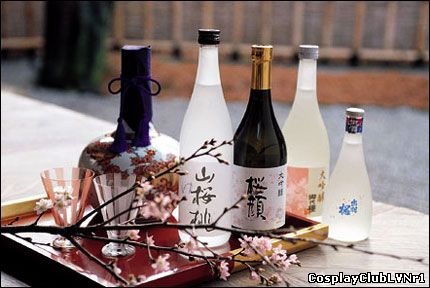
日本酒-This article uses the word "sake" as it is used in English, as the name for this specific Japanese beverage made from rice. However, in Japanese, the word sake (Japanese: usually preceded by the honorific prefix o-) means alcoholic beverages in general and not exclusively this specific single beverage; instead, the word Nihonshu ( "Japanese alcohol"?) is used to distinguish it from other beverages. In English, the word "sake" always refers to Nihonshu.
Sake is also referred to in English as "rice wine," but the characterisation implied is not accurate. Wine is made from the single fermentation of plant juices (other than sparkling wine, which can be a double fermentation to create the carbonation). Sake is produced by multiple fermentation of rice, which is similar to the way beer is produced.History
The history of sake is not well documented and there are multiple theories on how it was developed. One theory suggests that the brewing of rice started in China, along the Yangtze River and was subsequently exported to Japan. Another theory traces sake brewing back to 3rd century Japan with the advent of wet rice cultivation.[citation needed] The combination of water and rice lying around together would have resulted in molds and fermentation.
Regardless, the first sake was called kuchikami no sake, (Japanese for "chewing the mouth sake" or mouth chewed sake) and was made by people chewing rice, chestnuts, millet, acorn and spitting the mixture into a tub. The enzymes from the saliva allowed the starches to saccharify (convert to sugar). This sweet mixture was combined with freshly cooked grain and allowed to naturally ferment. This early form of sake was likely low in alcohol and consumed like porridge. This method was used by Native Americans; see cauim, and pulque. Chinese millet wine, xiǎo mǐ jǐu , made the same way, is mentioned in inscriptions from the 14th century BC as being offered to the gods in religious rituals. Later, from approximately the 8th century BC, rice wine, mǐ jǐu with a formula almost exactly like that of the later Japanese sake, became popular in China.
Centuries later, chewing was rendered unnecessary by the discovery of kōji-kin (Aspergillus oryzae), a mold whose enzymes convert the starch in the rice to sugar, which is also used to make amazake, miso, and soy sauce. Rice inoculated with kōji-kin is called "kome-kōji", or malt rice. A yeast mash, or shubo, is then added to convert the sugars to ethanol. This development can greatly increase sake's alcohol content (18%–25% by vol.); as starch is converted to sugar by kōji, sugars are converted to alcohol by yeast in one instantaneous process.
Kōji-kin was discovered most likely by accident. Kōji spores and yeast floating in the air would land in a soupy rice-water mixture left outside. The resulting fermentation would create a sake porridge not unlike the kuchikami no sake but without the hassle of needing a whole village to chew the rice. This porridge was probably not the best tasting, but the intoxication was enough to keep people interested in making it. Some of this mash would be kept as a starter for the next batch.
Experimentation and techniques from China sometime in the 7th century AD gave rise to higher quality sake. Sake eventually became popular enough for a brewing organization to be established at the Imperial Palace in Kyoto, the then Capital of Japan. This resulted in full-time sake brewers, and these craftsmen paved the way for many more developments in technique. It was during the Heian Era (794-1185) that the development of the three step addition in the brewing process was developed (a technique to increase alcohol content and reduce chance of souring).
For the next 500 years the quality and techniques used in brewing sake steadily improved. The practice of using a starter mash or "moto" was adopted, for the purpose of cultivating the maximum possible amount of yeast cells before brewing . Brewers were also able to isolate kōji for the first time and, thus, were able to control with some consistency the saccharification (converting starch to sugar) of the rice.
Through observation and trial and error, a form of pasteurization was also developed. Batches of sake that began to sour due to bacteria during the summer months were poured out of their barrels into tanks and heated. However, the resulting pasteurized sake would then be returned to the bacteria infected barrels. Hence the sake would become more sour and, by the time fall came around, the sake would be unpalatable. The principles behind pasteurization (and better methods of storing sake) would not be understood until Louis Pasteur discovered them some 500 years later.
During the Meiji Restoration, laws were written that allowed anybody with the money and know-how to construct and operate their own sake breweries. Around 30,000 breweries sprang up around the country within a year. However, as the years went by, the government levied more and more taxes on the sake industry and slowly the number of breweries dwindled to 8,000.
Most of the breweries that grew and survived this period were set up by wealthy landowners. Landowners who grew rice crops would have rice left over at the end of the season and, rather than letting this stash of rice go to waste, would ship it to their breweries. The most successful of these family breweries still operate today.
During the 20th century, sake-brewing technology grew by leaps and bounds. The government opened the sake-brewing research institute in 1904 and, in 1907 the very first government-run sake tasting/competition was held. Yeast strains specifically selected for their brewing properties were isolated and enamel-coated steel tanks arrived. The government started hailing the use of enamel tanks as easy to clean, lasting forever, and being devoid of bacterial problems. (The government considered wooden barrels to be "unhygienic" because of the potential bacteria living in the wood.) Although these things are true, the government also wanted more tax money from breweries as the wood in wooden barrels sucks up a significant amount of sake (somewhere around 3%) that could have otherwise been taxed. This was the end of the wooden-barrel age of sake and the use of wooden barrels in brewing was completely eliminated.
In Japan, sake has long been taxed by the federal government. In 1898 this tax brought in about 55 million yen out of a total of about 120 million yen, so about 46% of the government's total direct tax income.
During the Russo-Japanese War in 1904–1905, the government banned the home brewing of sake. At the time, sake made up an astonishing 30% of Japan's tax revenue. Since home brewed sake is tax-free sake, the logic was that by banning the home brewing of sake, sales would go up, and more tax money would be collected. This was the end of "doburoku" (homebrewed) sake, and the law remains in effect today even though sake sales now make up only 2% of government income.
When World War II erupted, the sake-brewing industry was dealt a hefty blow as the government clamped down on the use of rice for brewing. Most of the rice grown during this time was used for the war effort, and this, in conjunction with many other problems, was the end for thousands of breweries all over Japan.
Previously, it had been discovered that small amounts of alcohol could be added to sake to improve aroma and texture. But by government decree, pure alcohol and glucose were added to small quantities of rice mash, increasing the yield by as much as four times. 95% of today's sake is made using this technique, left over from the war years. There were even a few breweries that were able to produce "sake" that contained no rice at all. Naturally, the quality of sake during this time suffered greatly.
After the war, breweries slowly began to recover, and the quality of sake gradually went up. However, new players on the scene — beer, wine, and spirits — became very popular in Japan, and in the 1960s beer consumption surpassed sake for the first time. Sake consumption continued to go down while, in contrast, the quality of sake steadily improved.
Today, sake has become a world beverage with a few breweries springing up in China, Southeast Asia, South America, North America, and Australia. More breweries are also turning to older methods of production.
While the rest of the world may be drinking more sake and the quality of sake has been increasing, it is not clear sailing for the sake industry. In Japan, the sale of sake is still declining and it is uncertain if the exportation of sake to other countries can save Japanese breweries. There are around 1,500 breweries in Japan now, whereas there were about 2,500 in 1988.
http://www.youtube.com/watch?v=OW4OOezncXg
Added by: Elans (MasterOfDark)
|
 折り紙 originally from China, origami (from oru meaning "folding", and kami meaning "paper") is the ancient Japanese art of paper folding. The goal of this art is to create a representation of an object using geometric folds and crease patterns preferably without the use of gluing or cutting the paper,and using only one piece of square paper.Origami only uses a small number of different folds, but they can be combined in a variety of ways to make intricate designs. The most well known form is probably the Japanese paper crane. In general, these designs begin with a square sheet of paper whose sides may be different colors or prints. Contrary to most popular belief, traditional Japanese origami, which has been practiced since the Edo era (1603-1867), has often been less strict about these conventions, sometimes cutting the paper during the creation of the design. HistoryThe origin of the art began as Chinese Paper Folding. The Japanese origin began in the 6th century when Buddhist monks from China carried paper to Japan. The first Japanese origami is dated from this period. Origami had already become a significant aspect of Japanese ceremony by the Heian period of Japanese history. Samurai warriors would exchange gifts adorned with noshi, a sort of good luck token made of folded strips of paper. Origami butterflies were used during the celebration of Shinto weddings to represent the bride and groom.In the 1960's the art of origami began to spread out, first with modular origami and then with various movements developing, including the kirikomi. Origami is now an international art.Paper and other materialsAlthough almost any laminar material can be used for folding, the choice of material used greatly affects the folding and final look of the model.
Normal copy paper with weights of 70–90 g/m² (19-24lb) can be used for simple folds, such as the crane and waterbomb. Heavier weight papers of 100 g/m² (approx. 25lb) or more can be wet-folded. This technique allows for a more rounded sculpting of the model, which becomes rigid and sturdy when it is dry.
Special origami paper, often also referred to as "kami" (Japanese for paper, among other things), is sold in prepackaged squares of various sizes ranging from 2.5 cm to 25 cm or more. It is commonly colored on one side and white on the other; however, dual coloured and patterned versions exist and can be used effectively for color-changed models. Origami paper weighs slightly less than copy paper, making it suitable for a wider range of models.
Foil-backed paper, just as its name implies, is a sheet of thin foil glued to a sheet of thin paper. Related to this is tissue foil, which is made by gluing a thin piece of tissue paper to kitchen aluminum foil. A second piece of tissue can be glued onto the reverse side to produce a tissue/foil/tissue sandwich. Foil-backed paper is available commercially, but not tissue foil; it must be handmade. Both types of foil materials are suitable for complex models.
Washi is the predominant origami paper used in Japan. Washi is generally tougher than ordinary paper made from wood pulp, and is used in many traditional arts. Washi is commonly made using fibers from the bark of the gampi tree, the mitsumata shrub (Edgeworthia papyrifera), or the paper mulberry but also can be made using bamboo, hemp, rice, and wheat.
Artisan papers such as unryu, lokta, hanji, gampi, kozo, saa, and abaca have long fibres and are often extremely strong. As these papers are floppy to start with, they are often backcoated or resized with methylcellulose or wheat paste before folding. Also, these papers are extremely thin and compressible, allowing for thin, narrowed limbs as in the case of insect models.
Paper money from various countries are also popular to create origami with, called "Moneygami". It is common to create the figure depicted on the note itself.
Few other items other than paper and fingers are necessary to fold origami; however, some enthusiasts prefer to use a folding bone to sharpen creases while folding. Other folders grow certain nails long to aid with creasing instead of a folding bone.Action Origami
Origami doesn't just cover still-lifes, it also covers moving objects; Origami can move in clever ways. Action origami includes origami that flies, requires inflation to complete, or, when complete, utilizes the kinetic energy of your hands, applied at a certain region on the model, to move another flap or limb. Strictly speaking, only the latter is really "recognized" as action origami. Action origami, first appearing with the traditional Japanese flapping bird, is quite common. One example is Robert Lang's instrumentalists; when the figures' heads are pulled away from their bodies, their hands will move, resembling the playing of music.
Mathematics of origami
The practice and study of origami encapsulates several subjects of mathematical interest. For instance, the problem of flat-foldability (whether a crease pattern can be folded into a 2-dimensional model) has been a topic of considerable mathematical study.Significantly, paper exhibits zero Gaussian curvature at all points on its surface, and only folds naturally along lines of zero curvature. But the curvature along the surface of a non-folded crease in the paper, as is easily done with wet paper or a fingernail, is no longer subject to this constraint.The problem of rigid origami ("if we replaced the paper with sheet metal and had hinges in place of the crease lines, could we still fold the model?") has great practical importance. For example, the Miura map fold is a rigid fold that has been used to deploy large solar panel arrays for space satellites.Technical origami
Technical origami, also known as origami sekkei, is a field of origami that has developed almost hand-in-hand with the field of mathematical origami. In the early days of origami, development of new designs was largely a mix of trial-and-error, luck and serendipity. With advances in origami mathematics however, the basic structure of a new origami model can be theoretically plotted out on paper before any actual folding even occurs. This method of origami design was developed by Robert Lang, Meguro Toshiyuki and others, and allows for the creation of extremely complex multi-limbed models such as many-legged centipedes, human figures with a full complement of fingers and toes, and the like.The main starting point for such technical designs is the crease pattern (often abbreviated as 'CP'), which is essentially the layout of the creases required to form the final model. Although not intended as a substitute for diagrams, folding from crease patterns is starting to gain in popularity, partly because of the challenge of being able to 'crack' the pattern, and also partly because the crease pattern is often the only resource available to fold a given model, should the designer choose not to produce diagrams. Still, there are many cases in which designers wish to sequence the steps of their models but lack the means to design clear diagrams. Such origamists occasionally resort to the Sequenced Crease Pattern (abbreviated as SCP) which is a set of crease patterns showing the creases up to each respective fold. The SCP eliminates the need for diagramming programs or artistic ability while maintaining the step-by-step process for other folders to see. Another name for the Sequenced Crease Pattern is the Progressive Crease Pattern (PCP).Paradoxically enough, when origami designers come up with a crease pattern for a new design, the majority of the smaller creases are relatively unimportant and added only towards the completion of the crease pattern. What is more important is the allocation of regions of the paper and how these are mapped to the structure of the object being designed. For a specific class of origami bases known as 'uniaxial bases', the pattern of allocations is referred to as the 'circle-packing'. Using optimization algorithms, a circle-packing figure can be computed for any uniaxial base of arbitrary complexity. Once this figure is computed, the creases which are then used to obtain the base structure can be added. This is not a unique mathematical process, hence it is possible for two designs to have the same circle-packing, and yet different crease pattern structures. Other methods of design exist as well...Boxpleating, polygon packing. See Robert Langs Origami Design secrets for more information.http://www.youtube.com/watch?v=3iVP0tzwhVc
Added by: Elans G. (MasterOfDark)
|
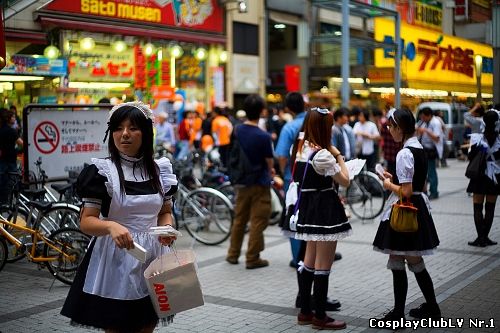 秋葉原("Field of Autumn Leaves")=Otaku Paradise, also known as Akihabara Electric Town (Akihabara Denki Gai), is an area of Tokyo, Japan. It is located less than five minutes by rail from Tokyo Station. Its name is frequently shortened to Akiba in Japan. While there is an official locality named Akihabara nearby, part of Taitō-ku, the area known to most people as Akihabara (including the railway station of the same name) is actually Soto-Kanda, a part of Chiyoda-ku.Akihabara is a major shopping area for electronic, computer, anime, and otaku goods, including new and used items. New items are mostly to be found on the main street, Chūōdōri, with many kinds of used items found in the back streets of Soto Kanda 3-chōme. First-hand parts for PC-building are readily available from a variety of stores. Tools, electrical parts, wires, microsized cameras and similar items are found in the cramped passageways of Soto Kanda 1-chōme (near the station). Foreign tourists tend to visit the big name shops like Laox or other speciality shops near the station, though there is more variety and lower prices at locales a little further away. Akihabara gained some fame through being home to one of the first stores devoted to personal robots and robotics.
http://tw.youtube.com/watch?v=VSSqJZmn3AE
|
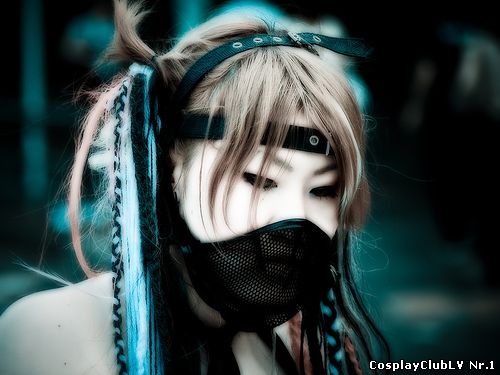 原宿"Meadow lodging" is the common name for the area around Harajuku Station on the Yamanote Line in the Shibuya ward of Tokyo, Japan.
The area is known internationally for its youth style and fashion. Harajuku street style is promoted in Japanese and international publications such as Kera,
Tune, Gothic & Lolita Bible and Fruits.LocationGirls at Harajuku Station on a Sunday afternoon
Rockabilly dancers in Yoyogi Park
Harajuku is an area between Shinjuku and Shibuya. Local landmarks include the headquarters of NHK, Meiji Shrine, and Yoyogi Park.
The area has two main shopping streets, Omotesandō and Takeshita Street (Takeshita-dōri). The latter caters to youth fashions and has
many small stores selling Gothic Lolita, visual kei, rockabilly, hip-hop, and punk outfits, in addition to fast food outlets and so forth.
In recent years Omotesandō has seen a rise in branches of expensive fashion stores such as Louis Vuitton, Chanel, and Prada.
The avenue is sometimes referred to as "Tokyo's Champs-Élysées". Until 2004, one side of the avenue was occupied by the
Dōjunkai Aoyama apāto, Bauhaus-inspired apartments built in 1927 after the 1923 Kantō earthquake. In 2006 the buildings were
controversially destroyed by Mori Building and replaced with the "Omotesando Hills" shopping mall, designed by Tadao Ando.
The area known as "Ura-Hara" (back streets of Harajuku) is a center of Japanese fashion for younger people — brands such as
A Bathing Ape and Undercover have shops in the area.SubculturesThe term "Harajuku Girls" has been used by English-language media to describe teenagers dressed in any fashion style who are in the area of Harajuku.
These girls may be members of various sub-cultures including Gothic Lolita, Ganguro, Gyaru, Raver and Kogal, or may often cosplay as characters from
an anime, movie, or manga.
Three teens outside Harajuku Station cosplay members of the band Himitsu Kessha Kodomo A.
In the 1980s large numbers of street performers and wildly dressed teens including takenoko-zoku "bamboo-shoot kids" gathered on Omotesandō
and the street that passes through Yoyogi Park on Sundays when the streets were closed to traffic. The streets were reopened to traffic in the 90s,
and a great number of teens stopped gathering there. Today there are still teenagers hanging out in Harajuku, mostly on the bridge across the
train tracks from Harajuku station to Yoyogi Park.
Visual kei is associated with Harajuku. In attendance one will find Visual kei cosplayers (those dressed as their favorite bands) and those in the
Gothic Lolita subculture/fashion. http://tw.youtube.com/watch?v=ygUxJ2FLJBU
Added by: Elans Gūtmanis (MasterOfDark)
|
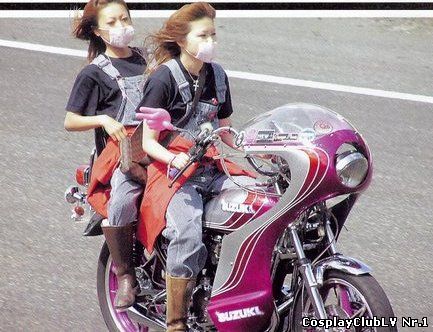 暴走族 is a Japanese subculture associated with motorcycle clubs and gangs.
They were first seen in the 1950s as the Japanese automobile industry expanded rapidly.
The first bōsōzoku were known as kaminari-zoku ("Lightning Tribes"). It is common to see bōsōzoku groups socializing
in city centers and playing loud music characterized by their lifestyle, such as The Roosters, and the Street Sliders.
The word bōsōzoku is also applied to motorcycle gangs, who share an interest in modifications (often illegal) for motorcycles,
such as removing the mufflers so that more noise is produced. These bōsōzoku groups also engage in dangerous or reckless driving,
such as weaving in traffic, not wearing motorcycle helmets, and running red lights. Another activity is shinai bōsō speeding in city streets,
not usually for street racing but more for thrills. With many bikes involved, the leading one is driven by the sentōsha, the leader,
who is responsible for the event and is not allowed to be overtaken. Japanese police call them Maru-Sō (police code),
and dispatch a police vehicle to trail any groups of bikes to prevent any possible incidents,
which can include riding through suburbs at speeds of 5–10 miles an hour, creating a loud disturbance and waving imperial Japanese flags,
to starting fights which can include weapons such as swords and Molotov cocktails.
These bōsōzoku gangs are generally composed of people under the legal adult age, which in Japan is 20 years old,
and are subject to increasing state and police pressure.
Bōsōzoku are known to modify their bikes in peculiar and often showy ways. A typical customized bosozoku bike usually
consists of an average Japanese road bike that appears to combine elements of an American chopper style bike and a British café racer,
for example: oversized visored fenders like those found on café racers, "sissy" bars and raised handle bars like those on a chopper.
Loud paint jobs on the fenders or the gas tanks with motifs such as flames or kamikaze style "rising sun" designs are also quite common.
The bikes will often be adorned with stickers and/or flags depicting the gang's symbol or logo.
There are also marked regional differences in motorcycle modifications. For example, Ibaraki bōsōzoku are known to modify their
motorcycles in an extensively colorful, flashy way. They will often have three or four oversized visored fenders in a tower like way in a
motorcycle painted in bright yellow or pink with Christmas light–like adornments.
Bososozoku also have a distinct style of car modification, eponymously called "bosozoku style".
These cars are often modified with large exhaust pipes, bright paint, and large aero kits.
Also popular are large turbo or supercharger intercoolers with highly polished tubing,
usually mounted in a prominent position in the front bumper.
Added by: Elans Gūtmanis (MasterOfDark)
|
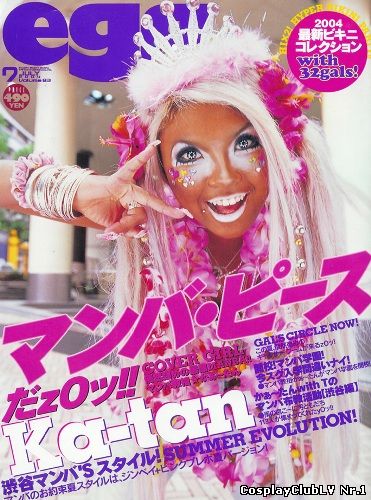 ヤマンバ and manba are terms often used to describe extreme practitioners of ganguro fashion.
Old school Yamanba and Manba; (particularly known as 2004 Manba); featured dark tans and white lipstick, pastel eye make-up,
tiny metallic or glittery adhesives below the eyes, brightly-coloured contact lenses, plastic dayglo-coloured clothing, and incongruous accessories,
such as Hawaiian Leis (often the Alba Rosa brand). Stickers on the face died out shortly after 2004, and for a while, Manba died.
Yamanba is now more extreme, and hair is often multicoloured, and usually synthetic. 2008's Manba has seen a darker tan,
and no facial decoration (stickers). Hair is usually neon/bright colours, with pink being a favourite.
Wool, extensions and clips are worn to make hair appear longer. Clothing remains the same, although Leis are worn less frequently now.
Manba and Yamanba are not to be confused. Yamanba has white make-up only above the eye, while Manba has makeup below the eye also.
Stuffed animals, bracelets, bells and hibiscuses are worn. The male equivalent is called a "center guy" (Sentāgai?, Center Street),
a pun on the name of a pedestrian shopping street near Shibuya Station in Tokyo where yamanba and center guys are often seen.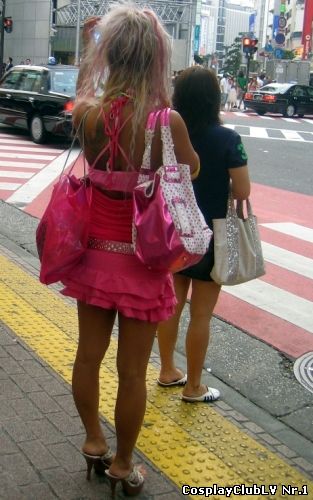
Added by: Elans Gūtmanis (MasterOfDark)
|
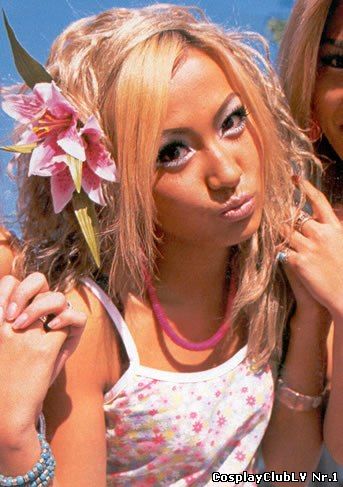 ガングロ is an alternative fashion trend among young Japanese women which peaked in popularity around the year 2000,
but remains evident today. The Shibuya and Ikebukuro districts of Tokyo are the center of ganguro fashion.
Ganguro appeared as a new fashion style in Japan in the early 1990s and is prevalent mostly among young women and women in their early 20s to this date. In ganguro fashion, a deep tan is combined with hair dyed in shades of orange to blonde, or a silver grey known as "high bleached".
Black ink is used as eye-liner and white concealer is used as lipstick and eyeshadow. False eyelashes, plastic facial gems,
and pearl powder are often added to this. Platform shoes and brightly-coloured outfits complete the ganguro look.
Also typical of ganguro fashion are tie-dyed sarongs, miniskirts, stickers on the face, and lots of bracelets, rings, and necklaces.
Ganguro falls into the larger subculture of gyaru (from English "gal"), a slang term used for various groups of young women,
usually referring to overly childish or rebellious girls. Researchers in the field of Japanese studies believe that ganguro is a form
of revenge against traditional Japanese society due to resentment of neglect, isolation, and constraint of Japanese society.
This is their attempt at individuality, self-expression, and freedom, in open defiance of school standards and regulations.
The deep ganguro tan is in direct conflict with traditional Japanese ideas of feminine beauty. Due to this, as well as their use of slang,
unconventional fashion sense, and perceived lack of hygiene, ganguro gals are almost always portrayed negatively by the Japanese media.
Fashion magazines like Egg and Kawaii magazine have had a direct influence on the ganguro. Other popular ganguro magazines include
Popteen and Ego System. The ganguro culture is often linked with Para Para, a Japanese dance style.
However, most para para dancers are not ganguro, and most ganguro are not para para dancers,
though there are many who are ganguro or gal and dance para para.
One of the most famous early ganguro girls was known as Buriteri, nicknamed after the black soy sauce
used to flavour yellowtail fish in teriyaki cooking. Egg made her a star by frequently featuring her in its pages during the height of the ganguro craze.
After modelling and advertising for the Shibuya tanning salon "Blacky", social pressure and negative press convinced Buriteri to retire from the ganguro lifestyle.
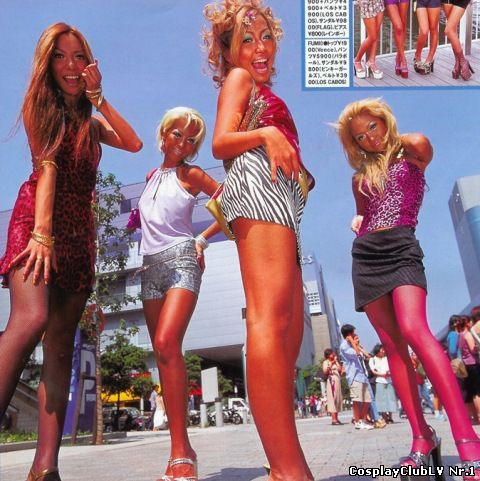
Added by: Elans Gūtmanis (MasterOfDark)
|
 785 785ギャル transliteration of the English word gal. The name originated from a 1970s brand of jeans called "gals",
with the advertising slogan: "I can't live without men", and was applied to fashion- and peer-conscious girls in their teens and early twenties.
Its usage peaked in the 1980s and has gradually declined. The term gradually drifted to apply to a younger group,
whose seeming lack of interest in work or marriage gained the word a "childish" image. It is now used almost interchangeably with kogyaru and younger generations may consider it clichéd or even archaic.
Varieties of gyaru
There are various subcategories of "gals" depending on the choice of fashion, and also gender.
Ganguro gyaru-a gal with an artificial deep tan and bleached hair.
Kogyaru-generally a high school student (kōkōsei).
Oyajigyaru-from oyaji and gyaru. A gyaru who behaves in a masculine way, who drinks beer and uses rough language.
Onegyaru-a gyaru who has graduated from high school, and thus become a more mature onee-san (literally "elder sister" but, here, "young lady"). The style is more sophisticated.
Ogyaru-a dirty or disheveled gyaru who may forsake daily baths or takes little care in her behaviour and dress, even by gyaru standards.
Gyaruo-the gyaru's male counterpart. See Gyaruo.
Manba-deep tan and contrasting white make-up. Their hair is usually pastel-coloured or blonde, and very long and back-combed. Their clothes are neon and layered.
Kigurumin-wear kigurumi, a type of pajama-suit that resembles an animal and sometimes cartoon characters.
Bibinba-this look usually includes a lot of gold and jewellery. Similar to b-gal.
Banba-barbie-gal, with differences such as their wearing of slippers and stilettos. They also use more glitter, and have a neon touch to their hair. They use more extreme-looking types of false eyelashes and coloured contact lenses. The most respected Gal-cir is Angeleek; there are 22 members in their Tokyo group, and they have many other groups throughout the country.
Kyoba bo-i-the male banba. The make-up is similar to Sentaa-gai's, but the eyes can be made up to look bigger. They accessorize excessively and commonly don bangs.
Himegyaru-girls who dress as princesses. Hair colours vary from blonde to brown and is usually very big and teased. They wear expensive clothing from brands such as Liz Lisa and Jesus Diamante.
Added by: Elans Gūtmanis (MasterOfDark)
|
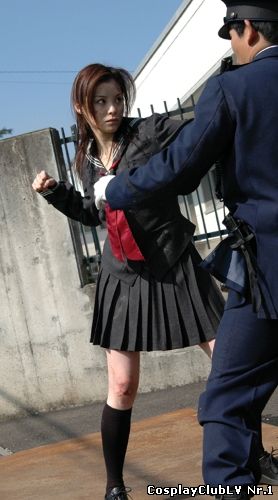 スケバン / 女番 / スケ番 means delinquent girl or boss girl in Japanese, equivalent to the male bancho.
One dictionary says that sukeban only refers to the leader of a girl gang, not any member of the girl gang.
The common signifiers of sukeban (described by the Japanese police in 1980s pamphlets as "omens of downfall")
include brightly-dyed or permed hair, and modifications of the school uniform such as wearing coloured socks, rolling up the sleeves and lengthening the skirt.
Sukeban may engage in activities such as glue sniffing, stimulant use, shoplifting, theft, prostitution and violence, but if arrested,
they can be charged with the lesser offence of "pre-delinquency". The word sukeban was originally used by delinquents,
but has been used by the general population since 1972.
In the 1970s and 1980s, sukeban became popular characters in seinen manga. Sukeban characters could also be seen in shōjo manga publications;
Sukeban Deka, YajiKita Gakuen Douchuuki and Hana no Asuka-gumi were three popular shōjo series that had a mostly sukeban cast.
Single sukeban characters interacting with a more 'normal' cast could also be seen - early on in her character design,
Makoto Kino of Sailor Moon was intended to lead a sukeban gang, and in the anime and manga she has curly hair,
a lengthened school uniform skirt and a reputation as a fighter. However, the lengthened skirt did not appear in her costume in the 2003-2004
Pretty Guardian Sailor Moon.Sukeban in film-Pink film director Norifumi Suzuki made the first films in the seven-film Girl Boss (Sukeban) series.
He also started the 4-film Terrifying Girls' High School series (1971-1972) featuring sukeban characters. Both series featured prominent
Pinky violent actresses Reiko Ike and Miki Sugimoto. 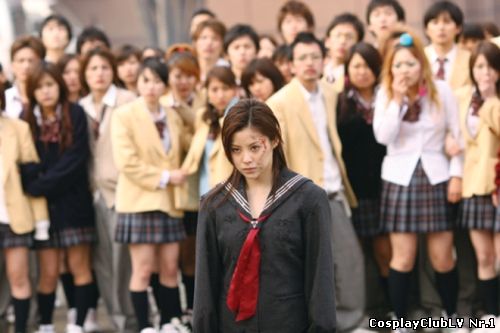
Added by: ELans Gūtmanis (MasterOfDark)
|
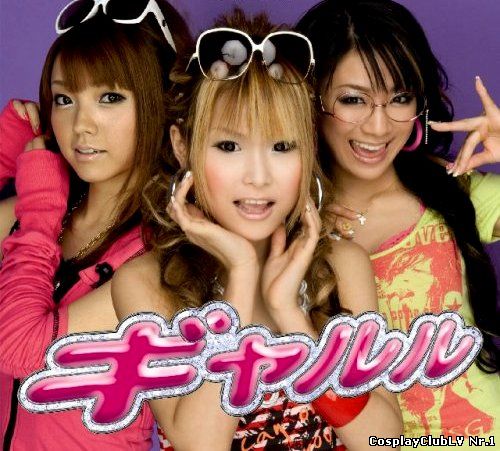 コギャル is a subculture of girls and young women in urban Japan, one of several types of so-called gyaru.
They are characterized by conspicuously displaying their disposable income through distinctive tastes in fashion, music, and social activity.
In general, the kogal "look" roughly approximates a sun-tanned California Valley Girl, and indeed,
there are even some linguistic similarities between these Western groups and Kogal. Both subcultures have derived entire sets of slang terms
(such as "Kogalese" (kogyaru-go?)). Kogals are not to be confused with the ganguro subculture, although they are similar.
Kogals are known for wearing platform boots, a miniskirt, copious amounts of makeup, hair coloring (usually blonde or brown),
artificial suntans, and designer accessories. If in school uniform, the look typically includes skirts pinned very high and loose socks
(large baggy socks that go up to the knee). Kogals' busy social lives and desire for new material goods lead them to be among the
first consumers of Japanese mobile phone technology, and their taste in clothes tends toward Burberry scarves and Louis Vuitton handbags.
Kogals spend much of their free time (and their parents' income) shopping, and their culture centers on the Shibuya district of Tokyo,
in particular the 109 building, although major Japanese cities are sure to have a small population. During the summer,
kogals may sometimes be seen at the beach. They are generally not seen in high-end department stores.
Critics of the Kogal subculture decry its materialism as reflecting a larger psychological or spiritual emptiness in modern Japanese life.
Some kogals support their lifestyle with allowances from wealthy parents, living a "freeter" or "parasite single"
existence that grates against traditional principles of duty and industry.
The kogal phenomenon emerged in the mid-1990s and its effects can still be seen today in its numerous off-shoots of sub-categories,
although conservative tastes in dress and hair color seem to be on the upswing. The Gothic Lolita aesthetic has been described as a reaction to the kogal look,
since it attempts to reclaim childhood innocence, though skeptics point out that most Lolita merely model after J-rock cosplay and spend just as much,
if not more money on their appearance when compared to kogals.
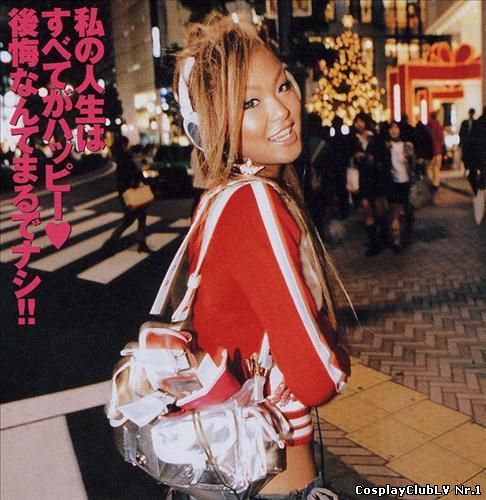
Added by: Elans Gūtmanis (MasterOfDark)
|
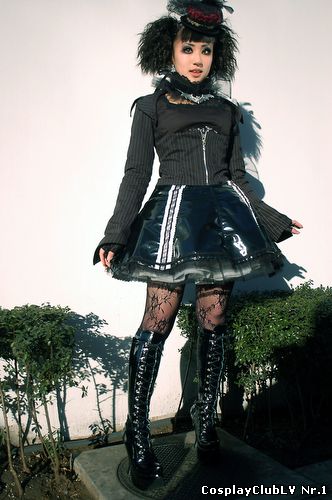
ゴスロリ (Gothic Lolita)-Lolita is a fashion subculture in Japan that is primarily influenced by Victorian children’s clothing as well as costumes from the Rococo period.
Lolita has made this into a unique fashion by adding gothic and original design elements to the look. From this,
Lolita fashion has evolved into several different sub styles and has created a devoted subculture in Japan.
The Lolita look consists primarily of a knee length skirt or dress, headdress, blouse, petticoat, knee length socks or stockings and
rocking horse or high heel/platform shoes. Teddy bears and dolls such as Super Dollfies are often carried to emphasize the childlike look.
Gothic Lolita (known in Japan as gosurori, "goth-loli") is a mixture of the Gothic and Lolita fashion.
The origins of the Japanese Gothic style can be traced back to the English New Wave Movement during the 1980s: however,
the Japanese Gothic scene is fundamentally different than the Gothic subcultures of the west.
This Gothic fashion has been adopted into the Lolita fashion through the use of darker make up, clothing, and themes in the design.
Unlike other Lolita Styles, in Gothic Lolita darker colors are used for makeup. Red lipstick and smoky or neatly defined eyes,
created using black eyeliner, are typical styles. The Gothic Lolita makeup is not as heavy or dramatic as the Western gothic counterparts.
Newer makeup styles emphasize lighter colors but still retain the heavy eye makeup.
The outfits themselves use dark color schemes like black, dark blues and purples. Black and white is the most common color scheme in this look.
The KuroLoli subset uses a strict black-on-black color scheme. Gothic Lolita outfits often use less detailed fabric than other Lolita styles.
Cross jewelry and other religious symbols are also used to accessorize the gothic Lolita look. Other accessories, like bags and purses,
are often in uncommon shapes like bats, coffins, and crucifixes.
Like many other Lolita fashions, the Japanese visual kei movement was responsible for helping to introduce and popularize the Gothic Lolita style.
One artist in particular, Mana, a Japanese musician and fashion-designer, is considered to be the major force behind the popularization
of the Gothic Lolita style, though he is not credited with creating it. Mana’s own Gothic Lolita fashion label, Moi-même-Moitié,
has grown to be very successful. To describe the designs of his new label, he coined the terms Elegant Gothic Lolita (EGL) and Elegant Gothic Aristocrat (EGA).
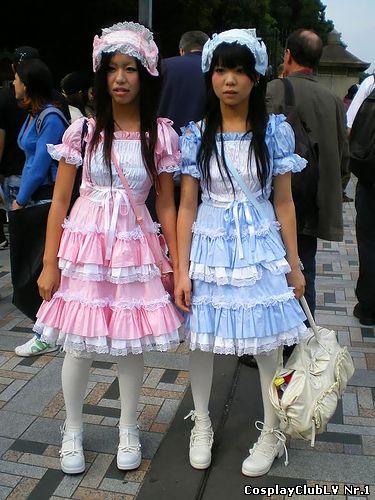
甘い lolita (Sweet Lolita (amaloli)) is heavily influenced by Rococo styles as well as shojo manga (girls' manga). Focusing on the child and fantasy aspects of Lolita,
the Sweet Lolita style adopts the basic Lolita format and uses lighter colors and child fantasy themes in its design.
Makeup used in sweet Lolita is common throughout most Lolita styles. A natural look is emphasized, to help maintain the child like feel of Lolita.
Light pastels, light pink, and natural colors make up the Lolita makeup color scheme.
Sweet Lolita fashion places its focus on the child-like aspects of Lolita design. Outfits consist of pastels, gingham or other colorful prints,
lace, bows, and ribbons to emphasize the cuteness in the design. Popular themes in the sweet Lolita are references to Alice in Wonderland,
fruits, and cake. To keep with the child feel of sweet Lolita, the shoes usually have a smaller heel than that of other Lolita styles.
Jewelry often reflects this fantasy theme: Popular motifs include cherries, cakes, hearts, ribbons, and bows.
Headdresses and bows are also a popular hair accessory to the sweet Lolita look. Bags and purses are often in the shape of stuffed animals or hearts.
Also included in Sweet Lolita are the sub-genres of ShiroLoli (WhiteLoli), which uses a strict white-on-white color scheme, and Country Lolita,
which incorporates gingham prints and straw baskets, with hairstyles such as hair-braiding, and simple buns.
Momoko, a protagonist in the book/film Shimotsuma Monogatari (Kamikaze Girls in the US), is a popular example of sweet Lolita.
She idealizes the rococo period and likes to spend her time acting like a sweet and innocent child. She wears a popular Sweet Lolita brand called Baby,
The Stars Shine Bright. Other Lolita brands include Manifesteange Metamorphose temps de fille and Angelic Pretty.
Emily Temple cute (sister brand of Shirley Temple, a Japanese boutique for little girls), Jane Marple, and MILK are milder ama-loli (Sweet Lolita),
and one can buy them at department stores in Japan.

古典的なLolita (A Classical Lolita) and an Aristocrat. Note the man's contact lenses.
Classical Lolita (Classic Lolita) is a more mature style of Lolita that focuses on Baroque and Rocaille styles. This look can be seen as the more sophisticated,
mature Lolita style because of its use of small, intricate patterns, as well more muted colors on the fabric and in the overall design.
The colors in the classic Lolita style are lighter than those in the gothic Lolita, but are not as light as those used in sweet Lolita.
Empire waist dresses are also used to add to the more mature look of the classic Lolita. Shoes and accessories are less whimsical and more functional.
Jewelry with intricate designs is also common. The makeup used in classic Lolita is often a more muted version of the sweet Lolita makeup,
with an emphasis placed on natural coloring. This Lolita style uses slimmer dress silhouettes than its counterparts to add to the mature style.
An example of the classical Lolita brands are Juliette et Justine, Innocent World, Victorian Maiden and Mary Magdalene.
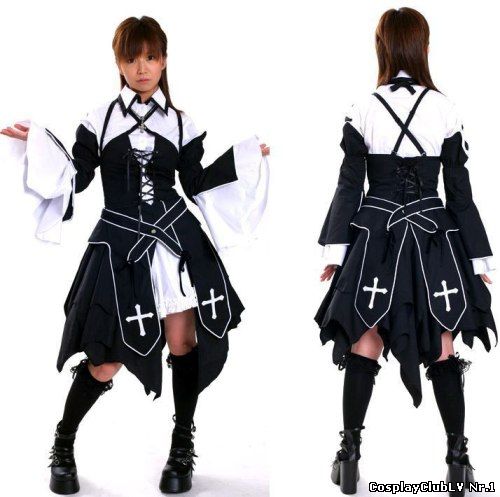
パンクの Lolita (Punk Lolita or Lolita Punk) adds punk fashion elements to Lolita fashion. Motifs that are usually found in punk clothing, such as tattered fabric,
ties, safety pins and chains, screen-printed fabrics, plaids, and short, androgynous hairstyles are incorporated into the Lolita look.
The most popular garments are blouses or cutsews and skirts, although dresses and jumper skirts are also worn. Common footwear includes boots,
Mary Janes or oxfords with platforms. Common Punk Lolita brands are A+Lidel, Putumayo, h. NAOTO and Na+H.
Many of the Japanese punk Lolita fashion brands take influence from London's famous Camden Town Markets. Vivienne Westwood, who,
though not a Lolita designer, has items and collections that reflect Lolita sensibilities, especially in her Japanese collections, is popular in the punk Lolita scene.
An example of Waloli. 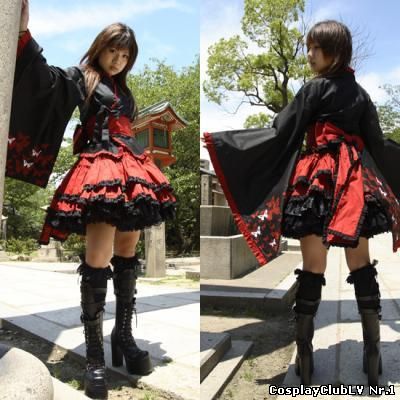
(Wa Lolita or Waloli) combines traditional Japanese clothing styles with the Lolita fashion. Wa Lolita usually consists of kimono or hakama modified to
fit with common Lolita garments. The bottom half of the garment is altered to accommodate a petticoat, or a kimono-style blouse is used as a top
to accompany a plain Lolita skirt. Outerwear can include haori or adult-sized hifu-vests. The shoes and accessories used in this style are typical of traditional
Japanese garb including kanzashi flowers, and geta, zori, or Okobo. These shoes are often used in place of the normal Lolita platform and high-heeled shoes. 
Qi Lolita is a similar style but uses Chinese clothing and accessories in place of Japanese. Usually this includes qipao and cheongsam-dresses
modified to accommodate a petticoat. Accessories include platform-slippers for footwear and bun-covers as hair accessories.
|
|
|
| Time Zones/時間帯 |
| Latvia - Liepaja - ラトビア
Japan - Tokyo - 日本
U.S.A. - New York - 米国
|
 |
| Weather Today/今日天候 |
|
|
 |
| Cosplay |
|
 |
| PinUp Girls |
|
 |
| Bikini/ビキニ |
|
 |
| NASA |
|
 |
| Sudoku |
|
 |
| Majong |
|
 |
| Sites/場所 |
|
 |
| Translater |
|
 |
| Doomsday |
|
 |
|




